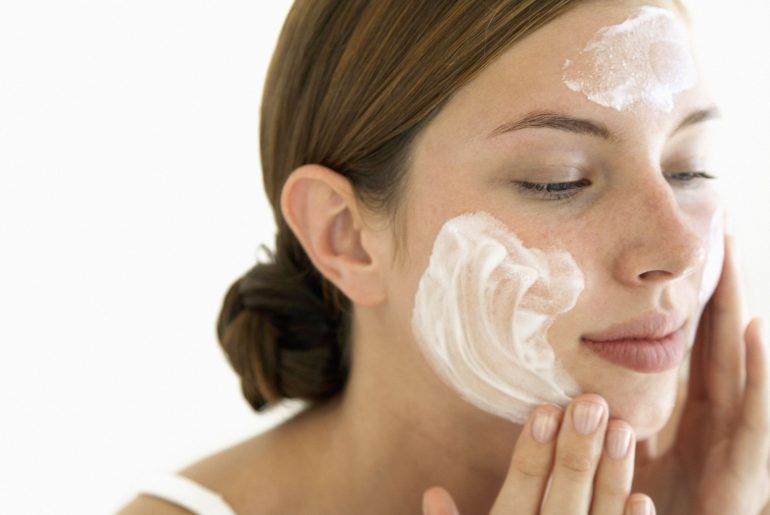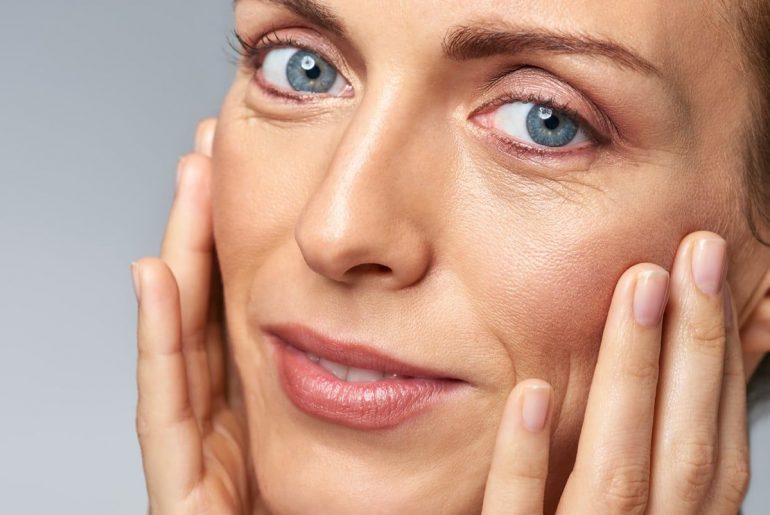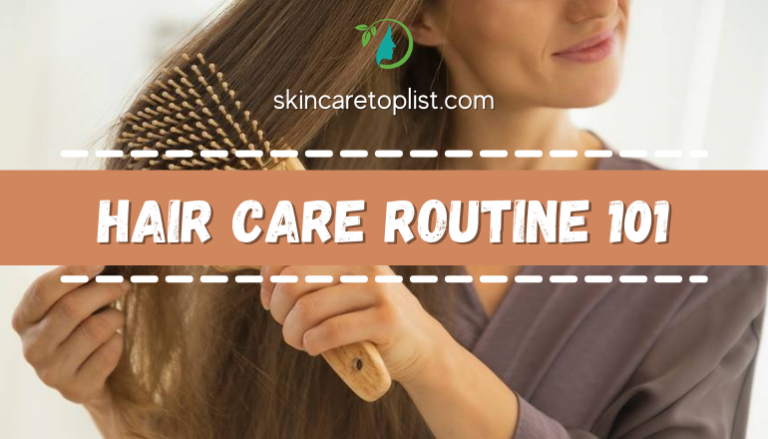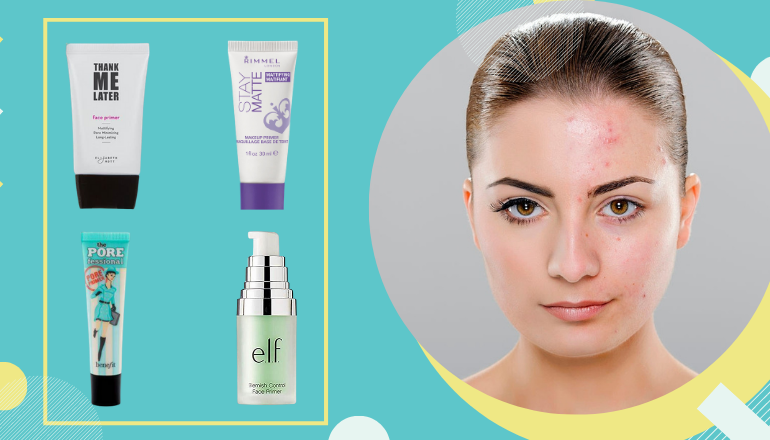
Hyperpigmentation is a term that people have often heard about. However, to understand what it is and how to deal with it, many unanswered questions are left behind. I can feel how frustrated you are when you realize some dark spots or large brown patches on your cheeks or necks.
The most common questions being asked are whether they are severe or can be cured, which causes those weird spots, and the best hyperpigmentation treatments. The answer will be shown in the following parts. Let's keep yourself hydrated by getting a glass of water and head to the most interesting article ever about hyperpigmentation!
What is hyperpigmentation?
So starting with the basics: What is hyperpigmentation? Generally, it is an umbrella term defined as any condition that leads to discoloration or darkening of the skin.
There are many causes for hyperpigmentation, but the most common forms result from excess sun exposure, eczema, psoriasis, and acne (especially when you decide to pop that pesky little pimple).
Thus, it begs the question, “How do discoloration and darkening form?”. Our body is covered by melanin, and that pigment gives color to skin, eyes, hair, and even the inside ears.
We have lots of immune system cells in our epidermis layer of the skin (the outer layer of your skin). When zooming into its very bottom, which is also known as the stratum basale, there are melanocytes (pigment cells). Melanocytes are a group of spidery-looking cells that produce a pigment known as melanosomes.
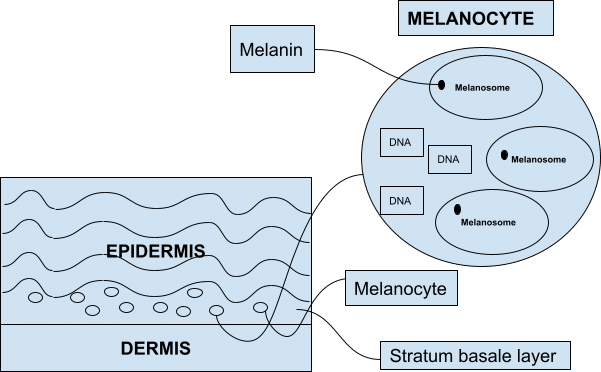
The cool thing is that no matter how pale, dark, or wherever we lie in between, we all have the same amount of melanocytes. Thus, our particular skin color is not about the number of these cells but how far the cellular extensions known as dendrites extend and reach. Dendrites are used to transfer the pigment granules to the neighboring epidermal cells, hence the spread of color.
Fun fact: melanocytes have been with us in our embryo stages of life, which means we most likely started developing color in our kin in the first three months of existence.
All around the melanocytes, there are many other epidermal cells known as keratinocytes. These look like little cushions with a nucleus inside. The keratinocytes are in charge of signaling to the melanocytes: “Hey, we need melanin!” Then the melanocytes respond like, “Roger that, we're sending them over”. That's how they are in their relationship. When the melanosomes transfer the keratinocytes, they gather together at the very top of the keratinocytes.
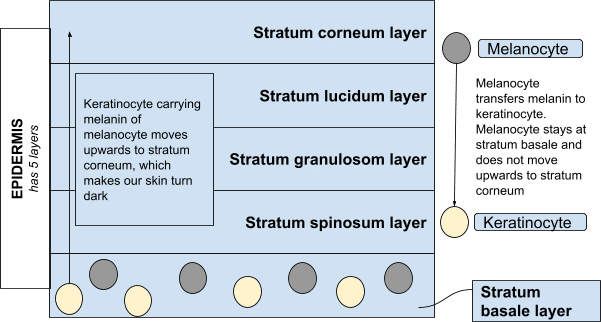
Fun fact: Keratinocytes help protect against bacteria, allergens, and microbes from entering our skin and body.
On a normal day, the melanin umbrella absorbs the UV rays that enter our skin and immediately protects us from sun damage. When we overexpose ourselves to the sun, the UV rays can penetrate deep into the skin and the cells. It means that the keratinocytes hold more melanin in their cells than usual, and it shows in your skin.
Not only that, when the UV rays reach the nucleus of the keratinocytes, which is the middle spot that is storing your DNA, it can get damaged, deformed, or even mutated. When many strands of DNA are being mutated or destroyed, this is the cause of skin cancer and melanoma.
The most common types of hyperpigmentation
How do you know that you have hyperpigmentation? Is it just a dark patch on your skin caused by sun damage? If you still think hyperpigmentation is that simple, that dark patch might be your friend for quite a long time. It is not only going out and buying skin care products, but it needs your effort to understand what happens in your skin when hyperpigmentation. Let's take a look at three different types of hyperpigmentation that can occur in our skin. Let’s get started!
1. Post-inflammatory hyper-pigmentation - A nightmare named acne wound
First up is post-inflammatory hyperpigmentation (PIH). Just as the name suggests, this form of hyperpigmentation is caused by inflammation of the skin. So when you are left with a dark red or brownish mark after popping that pimple, the chances are that you have PIH. The deeper inflammation is in the skin, the longer it will take to fade.
PIH can happen to anyone, but people with darker skin tone tend to get it more easily. It usually takes a long time to let the darkened wound or scar fade away. Hyperpigmentation tends to be more pronounced in sun-damaged skin conditions such as phytophotodermatitis, lichenoid, or erythema dyschromicum perstans.
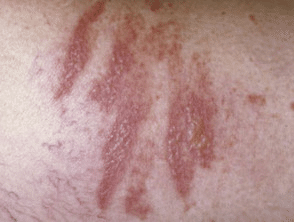
Phytophotodermatitis
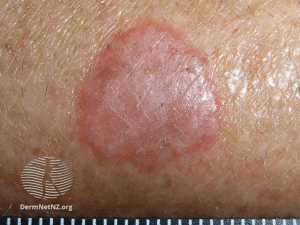
Lichenoid
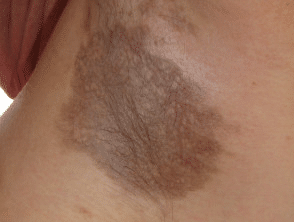
Erythema dyschromicum perstan
2. Melasma - An enemy of youth
.If you care for your skin and make a big vow of not squeezing your pimples, the nightmare I mentioned above might not visit you frequently. However, there is another skin worry that you might face. If you realize you have some light or dark blotchy areas on your face or neck, melasma is the knock at the door to take your youth vibe away.
Melasma is a skin lesion in brown patches, irregularly bounded, possibly on the cheeks, the bridge of the nose, the forehead, the upper lip, and the chin. Sad to say, this hyperpigmentation is more commonly seen in women than in men. Just another thing to add to our list of potential issues in life. Yes, it is not easy being a girl. There are 3 types of melasma that we often face to are:
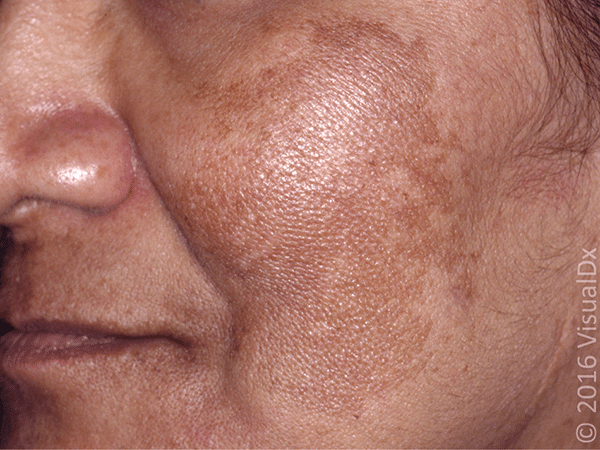
Epidermal melasma
An increase in skin pigment in the top layer of skin
Appear in light brown color arrays
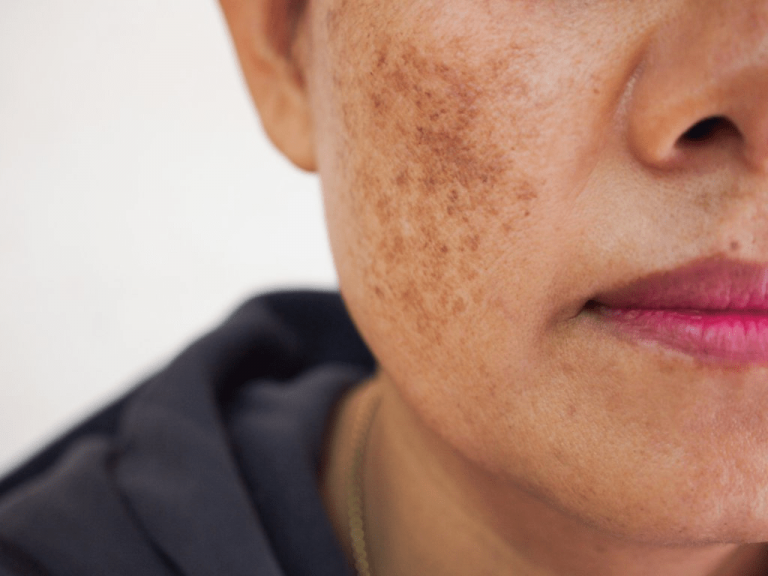
Dermal melasma
An increase in skin pigment in the second deeper layer of skin
Appear in dark down blotches
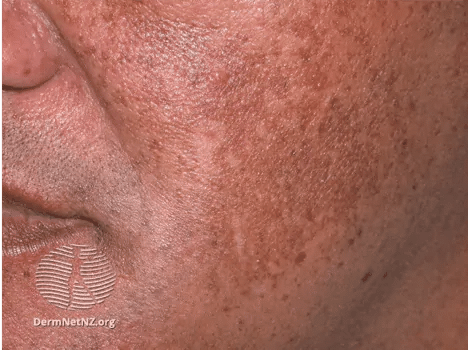
Mixed melasma
A combination of epidermal melasma and dermal melasma
It is caused by the increase in female sex hormones such as estrogen, progesterone, and MSH of the thyroid gland Diseases (Melanocyte Stimulating Hormone). Similar to PIH, melasma also occurs due to the excessive production of melanin from melanosomes. What makes melasma different from PIH is that it is believed to be also caused by genetics, UV exposure, and also hormonal influences in the body. Because it can potentially be caused by hormones, this makes melasma much more difficult to treat compared to other types of acne-treated hyperpigmentation or just like general freckling. Melasma is also known as the pregnancy mask because it can show itself in stages of pregnancy when our hormones are going out of whack and going through a rollercoaster ride.
3. Lentigines - A sign of aging
Before talking about lentigines, let’s answer the question, “Are lentigines freckles?”. Yes, they are a type of freckles. Freckles are beige or brown spots that commonly appear in the same color and round shapes. The most interesting fact is that they become darker after your skin gets exposed to the sun. As such, they slightly lighten in color during wintertime. You might find out that freckles commonly happen with red-haired and fair-skin people than other types of skin. Back to lentigines, they are one type of freckles besides ephelides. They happen on the skin in a large dark brown shape with a clearly defined edge. Lentigines are usually darker and larger than ephelides, and they do not become lighter during winter times. When you touch lentigines, you can feel the rough and scaly skin surface more than other undamaged skin areas.
Who will get lentigines? People from middle age (age of 40) might get lentigines more easily than the younger ones, and they increase with age. However, it does not mean that young people might not get it, too. They are most often caused by chronic sun exposure (sunspots, sometimes called liver spots) and appear most often on the face and back of the hands. Although progression from age spots to melanoma has not been confirmed, lentigines are also a risk factor for that disease.
Why do I get hyperpigmentation?
Most of the time, before doing a deep research about hyperpigmentation, I would always blame the sun for hating my skin so much. Then, I have realized that there are many causes leading to hyperpigmentation, and the sun seems not the only factor for my skin problems. As mentioned in the definition part about hyperpigmentation, melanocytes are what make our skin darker. In this part, I will share with you more clearly how those causes stimulate the production of melanocytes.
1. Hormonal changes
From when I was young until now, hormones have always been the main factor that affects hyperpigmentation the most. They not only trigger acne’s growth during my teenage time, but it also makes my melasma more pronounced as well. Hormonal fluctuation is always part of women’s lives. Our female hormones, estrogen, and progesterone, are well-known for triggering the overproduction of melanocytes, leading to dark spots. This happens more frequently with those whose skin is darker since the skin naturally creates more melanocytes. Therefore, when hormones are in flux, it triggers more melanocytes to produce, making you more susceptible to hyperpigmentation.
During pregnancy, hormonal change is quite a common thing which makes not only the mood swing but also the change in skin color. Normally, we call it melasma or pregnancy mask. Estrogen tends to increase and stimulate melanocytes to produce, making some parts of your body become darker such as the belly, nipples, or underarms. This also happens to those who have oral contraceptive pills or hormone replacement therapy.
Stress also gives a hand that leads to hormonal changes. When you are stressed, cortisol is released to cope with it. The more cortisol is produced, the more estrogen is elevated. When estrogen increases, it triggers a huge amount of melanocytes to produce. That is why it is obvious to understand how stressful you are through your face since the hyperpigmentation part will become darker when you are in a bad mood.
2. Sun damage
By providing warmth to the earth, we should understand the dark side of the sun. How can the sun accelerate hyperpigmentation? I will share with you a deep dive into it.
When sunlight reaches the earth’s surface, it is made up of three main types of radiation.
Infrared radiation: is what gives sunlight its warmth.
Visible light: helps us see.
UV light: a type of radiation that we cannot feel or see.
When it comes to the damaging effects of sunlight, UV is a major culprit. Two types of UV rays reach us on the earth's surface: UVA and UVB. Both types of UV can damage the skin but in slightly different ways. Normally, visible light from the sun is reflected off the epidermis (the outer layer of your skin), but UVB penetrates into it and reacts with the DNA of cells. When skin cells are damaged by UV lights, the melanin absorbs those lights to create a UV shield for the body. However, melanin is not able to completely stop skin damage from UVB. A skin tan is actually a sign that skin damage has already occurred.
UVA mostly involves accelerating skin aging. It can infiltrate down to the deep layer of the skin, which is called the dermis. The dermis has a scaffolding of molecules such as collagen that makes your skin elastic. When you pull on your skin, this scaffolding helps your skin to spring back. UVA damages your skin scaffolding. This makes your skin more prone to wrinkling and sagging.
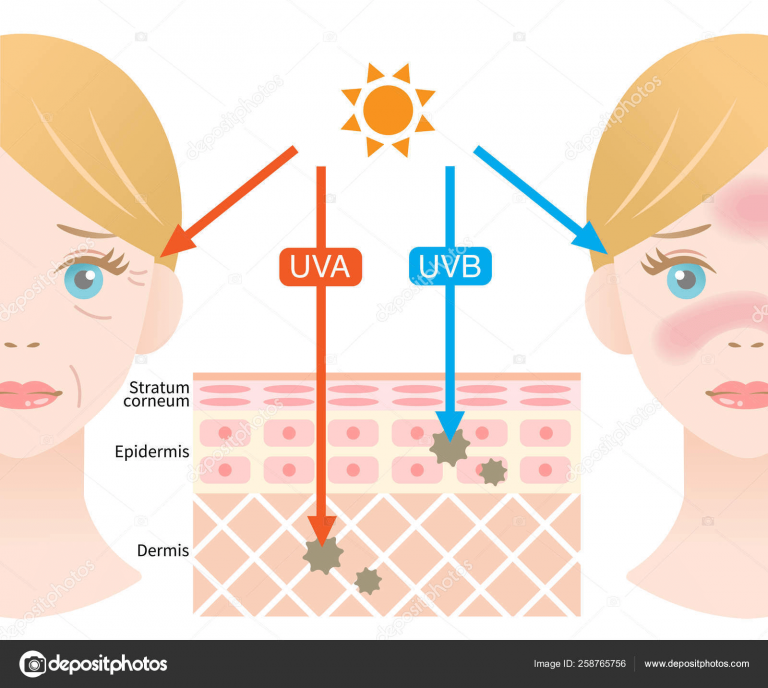
It is not all bad news. We know that sunlight in moderate amounts is helpful for making vitamin D. Also, UV light prescribed by doctors can be helpful for immune-based skin conditions like psoriasis. Therefore, in healthy doses, sunlight can be good for us, and I will share with you a four-step process to protect yourself from sun damage in a later part.
3. Post-inflammatory response
Whenever we get an injury, rash, or blemish, our skin reacts by becoming inflamed. We tend to associate inflammation as a bad thing because, honestly, they look terrible. But we should keep in mind that when we get inflammation on the skin, it is our body’s natural way of protecting us from infections, bacteria, and viruses. Thus, it is really a good thing.
Plus, we know a pimple or breakout happens because of inflammation caused by all the nasties trapped in our pores like bacteria, sebum, and dead skin cells. It seems like a cocktail of grossness. Tying it back to melanocytes underneath the skin’s surface, the inflammation triggers the melanocytes to release excessive melanosomes to the keratinocytes. This excessive pigment creates a discoloration around the wound of the inflamed area, which is hyperpigmentation. And the more inflamed your skin is, the more obvious your hyperpigmentation will look on the surface of the skin. Therefore, we definitely get rid of our popping habit when we see pimples on our skin. It will take a longer time to fade, and the wound won’t heal as quickly as properly.
4. A genetic predisposition: Race & Age
Age is actually a minor cause that leads to hyperpigmentation. As we age, the change in pigmentation system among types of skin is the same. Normally, the melanocyte density in sun-exposed skin is twice as high as the skin which has not been exposed to the sun. However, after 30, the density of melanocytes of those skin types decreases by 8% to 20% every decade. However, photoaged skin is an exceptional case. This type of skin has pigmentation imbalance, and normally, it is hyperpigmentation.
From aging skin, age spots are quite obvious in sun-exposed areas. Also, the blood vessels in the dermis tend to be more fragile when you get older; therefore, it is easy to get bruised and bleeding under the skin. After 40, the connective tissue has less elasticity, which is also known as elastosis. In the sun-exposed areas, it is more pronounced by showing the leathery. It normally occurs to farmers, sailors, or those who often expose their skin under the sun for a long time. It is also the time for the growth of skin tags, warts, dark, rough patches, or other types of blemishes which commonly happen in the older. The change in the skin when you age does affect your life generally. Your skin has a higher chance of getting injured than it is during younger days. Plus, aging skin takes longer to repair itself. Therefore, if the aging skin spends a large amount of time under the sun, hyperpigmentation will occur faster and assume 4 times more to heal and fade away.
When we talk about race and hyperpigmentation, Asian people’s skin contains more melanocyte-producing cells than other races. They easily get damaged by sunlight. Thus, the Asian are more susceptible to many types of hyperpigmentation, especially PIH. Did you know that Asian skin contains more melanin-producing cells than the skin of individuals from other races? These cells are easily damaged or stimulated by sunlight. As a result, Asians are generally more prone to a host of skin pigmentation problems.
Symptoms and risk
Types of hyperpigmentation | Symptoms | Risk |
|---|---|---|
Post-inflammatory hyperpigmentation | Darkened spots or patches happen after having had inflammatory wounds or scars due to acne or eczema | It is a natural healing mechanism of the body to protect the inflammatory skin areas from bacterial or virus |
Melasma |
| It is not a risk and not a serious problem. However, it does affect your appearance and how you feel. |
Lentigines |
|
|
Treatment Options
Each type of hyperpigmentation actually has completely separate treatments sometimes. For some, lasers are great. For others, it is going to make it irreversibly worse. The first and most important thing with pigmentation disorders is getting your diagnosis first by a qualified dermatologist to determine the best hyperpigmentation treatments for yourself. Otherwise, you might bark up the wrong tree, spend thousands of dollars potentially on stuff that is never going to work for your problem.
1. Cosmeceuticals
1.1 Lightening creams
Personally, lightening cream is the best facial treatment for those who have light melasma or dark spots. When having melasma or sunspots, I normally use lightening creams. They are OTC (over-the-counter) treatments that are quite easy to look for. To decrease the pigmentation or make it back to normal status, the best lightening cream for hyperpigmentation or the best product for melasma should contain hydroquinone, licorice extract, N-acetylglucosamine, and niacinamide. Some lightening creams actually have a stronger prescription form for those who have darker patches. For the best result, lightening creams should be applied once or twice a day. I apply it first, then sunscreen and makeup before I go to work in the morning and before I go to bed.
Since lightening creams are low in concentration, it takes around 3 to 4 weeks to show the result. If the lightening cream you choose does not result after 4 weeks, you better understand that it does not work for you. Please head to the qualified dermatologist to get advised.
1.2 Face acids
Another best facial treatment is using face acids. When we've heard about the word "acid", we will think about scary burns, don't we? However, if acid is used at the right amount and concentration, it contributes many benefits to skincare products. It acts as a miracle tool to fight acne, age spots, skin discoloration, etc.
How does it work? Normally, it helps exfoliate or shed the epidermis, promoting new skin cells to grow and take the place of the dead ones. In the market, you will be overwhelmed to choose your suitable face acids or to remember their names. Those face acids are also easily found in drugstores or beauty stores. To tell which one works well for your skin, you have to try yourself and find the best one. From my experience, face acids are the best products for melasma, those who have mild hyperpigmentation or slightly darker patches on their skin. Here are some common face acids that you should give them a shot:
Salicylic acid: This is the most common one in every best cream for hyperpigmentation on the face. In skincare products, it is used to exfoliate dead skin, remove dirt from your pores, and prevent acne from breaking out. Normally, the concentration of salicylic acid is from 0.5% to 2%. In some products, especially for acne scars, sun spots, or melasma treatment, the concentration can be higher. In this case, if you want to use it, it is better to have a talk with your dermatologist to get usage instructions. Generally, salicylic acid is quite safe, and it has anti-inflammatory properties. Therefore, it is great for those who are prone to acne or having new acne wounds.
Glycolic acid: This is also known as AHA. It is also a common ingredient in skincare products. Glycolic acid is well-known for reducing fine lines, preventing acne, fading dark spots, and evening out skin tone. That is why glycolic acid is undoubtedly one of the main ingredients in not only hyperpigmentation treatment products but also in best lotions for crepey skin on arms and legs. Its concentration is commonly below 10%. However, glycolic acid makes your skin more sensitive to sunlight, even if it is not on the skin. Therefore, when you are in treatment with this acid, you have to wear sunscreen more properly, not delay the treatment process, and prevent sun damage.
Azelaic acid: Although this acid is famous for its acne-fighting and skin-lightening properties, you might find it hard to get OTC products containing it for prescription only. Its concentration ranges typically from 15% to 20%. This acid is benign; however, for some people with sensitive skin, it might cause redness and peeling. If you are in that situation, you should talk to your dermatologist immediately to find the best cream for hyperpigmentation with a suitable acid concentration. Azelaic acid is also helpful in fading post-inflammatory hyperpigmentation if it is combined with retinoids or hydroquinone.
1.3 Retinoids - Best product for hyperpigmentation on face
Retinoids are one of the oldest OTC skincare ingredients that are used for pigmentation disorder treatment. It is derived from vitamin A. Thanks to their tiny molecular structure, it is easy for them to penetrate deeply into the skin below the epidermis. You can find this ingredient from OTC products or from prescriptions, and of course, OTC versions always have weaker effects. When using retinoids, you can feel some significant positive changes in your skin, such as the skin structure is firmer, better moisturizing level, brown patches become lighter, and skin tone is evened out. Suppose you do not feel those changes after a few months of using retinoids. In that case, you should talk to your dermatologist to get tretinoin.
2. Sun protection - Best facial treatment
The best facial treatment always comes with the best sun protection. Sun protection is extremely important in treating hyperpigmentation, especially when you are using vitamin C or chemical peels. You should limit direct sun exposure by wearing a jacket or wearing suitable shielding and using sunscreen with an SPF of 30 or higher to protect your skin and prevent it from developing. Darker skin.
To find the right sunscreen for your skin, I have come up with a 4-step system:
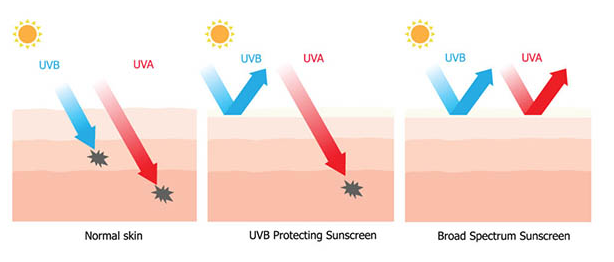
Step 1: Check what kinds of UV that the sunscreen protects you from. This is also called the spectrum of activity. A sunscreen that protects you from both UVA and UVB is labeled as “broad-spectrum”. This step is absolutely important because, in the market, many sunscreens do not protect your skin from UVA.
Step 2: Look at the sun protection factor or SPF rating of the sunscreen. It is designed to measure UVB protection only. There is not much difference between SPF 30 and 50 since the protection from UVB rays is 97% and 98%, respectively. Thus, any sunscreen that is both broad spectrum and SPF 30 or above is a great choice.
Step 3: Look at sunscreen’s ingredients since they can tell you whether it is a physical/mineral or chemical/organic sunscreen. Both of them have their own pros and cons. Physical sunscreen is designed for sensitive skin but does take time to blend on your skin. Chemical sunscreen, although, contains many different ingredients that can absorb into your skin, is easy to blend, and has a better aesthetic result.
Step 4: Pick the formulation that you want. These days, sunscreens have a huge variety of forms for you to choose from. They come as roll-ons, aerosols, creams, or lotions. Rolls on and lotions tend to provide the best sun protection because it provides a better even coating than spray-on sunscreens.
3. Chemical peels - Best treatment for pigmentation on face
A chemical peel is no longer a new treatment for those who have hyperpigmentation. It uses strongly concentrated acids to treat the skin areas you wish to remove the discoloration. This method is known to decrease the uneven color patches on your skin by removing the epidermis. Sometimes, it might go more deeply into the dermis, the middle skin, to get better results.
Again, a chemical peel is quite common in the beauty community. We have many OTC products for the chemical peel. However, we are still advised to meet the dermatologist in advance and get the chemical peel done in the clinic. It helps you better understand your hyperpigmentation status, and treatment can yield a quicker result.
If you wish to do a chemical peel at home, there are some risks you might face, such as redness, irritation, bleeding, and blistering. It depends on your skin type and how strong the chemical peel that you choose. When the process is done improperly, scars might happen, and it makes your hyperpigmentation worse.
You must pay more attention to the fact that chemical peel is not a good treatment for those who often expose skin under the sun for hours, such as outdoor models, swimming pool safety guards, etc. Your skin turns to be more sensitive to sunlight after going for chemical treatment. It gets worse when you do not carefully apply sunscreen and use other UV protection.
4. Lasers - Best hyperpigmentation treatment
The best hyperpigmentation treatment that I really want to introduce to you is lasers. Lasers (Light Amplification by Stimulated Emission of Radiation) are high-intensity monochromatic coherent lights used for dermatologic issues. Different problems are treated by other wavelengths. When the wavelength increases, the absorption of melanin is lowered down. A longer wavelength is allowed to penetrate more deeply into the dermis. A wavelength that is below 600 nm can damage pigmented cells by low energy. The longer 600 nm can penetrate more deeply into the skin, but it needs more energy to damage melanosomes from melanocytes.
Ablative lasers, although it is stronger, it has potential side effects. Besides, non-ablative laser treatment might not work well for some people, but it can darken your skin instead of lightening. Therefore, having a consultation with a qualified dermatologist is a must to select the best option for your skin.
5. 6 natural skin helpers
Besides having many chemical treatments for hyperpigmentation, a big question is asked whether we can find alternative natural ingredients. Many skincare lovers still prefer a “clean, all-natural” philosophy in their skin treatment. Absolutely, 6 natural skin helpers are ready to fade your hyperpigmentation problems away.
ARBUTIN
Arbutin is a familiar skin-whitening ingredient in cosmetics. Chemically, arbutin is a form of hydroquinone (a skin whitening agent), but its molecule has added glucose. Instead of killing melanocytes, arbutin helps to inhibit the enzyme that produces melanin in the cells. Because of its different ways of working, the best cream for hyperpigmentation should have arbutin. It is a more benign skin whitener and does not have the same undesirable side effects as hydroquinone, although the results may be slower.
Alpha Arbutin is a regular ingredient in cosmetics that lighten and enhance skin tone, such as skin cream, sunscreen, melasma, dark spots, freckles. This active ingredient is water-soluble and stable in the pH range from 3.5 to 6.5.
KOJIC
The name kojic acid is derived from "Koji", a chemical product obtained from a variety of fungi such as A. flavus, A. oryzae, A. tamarii, and A. parasiticus. Kojic acid is used mainly in health and beauty care products to lighten skin. It is used to treat skin conditions such as sun-damaged skin, acne scars, and age spots. Kojic acid acts as a brightener by blocking tyrosine (an amino acid needed to aid melanin production) from forming, thereby blocking melanin production.
Products containing kojic acid can also be used on other parts of the body, such as the legs and arms. The concentration of kojic acid in cosmetics is usually between 1% and 4%.
LACTIC ACID
Lactic acid is a skincare ingredient that offers many benefits, especially its exfoliating ability. When used in an environment of the right pH (whether it is designed to stay on the skin or in a high-strength crust washed off after a few minutes), lactic acid works by gently breaking down the links between the dry and dead skin cells on the surface. That is why the best creams for hyperpigmentation on the face usually contain lactic acid.
Lactic acid is part of the skin's natural moisturizing factor, also known as NMF (natural moisturizing factor). It is highly moisturizing thanks to its unique structure that allows it to bind water in the skin.
Lactic acid with a concentration of 5 to 12% helps to even out skin tone by accelerating the process of peeling and regenerating new cells. The dark spots after acne, melasma also gradually fade away after using it. A concentration between 8 and 12% improves sun-damaged skin, including wrinkles and rough texture.
NIACINAMIDE (B3)
Niacinamide is a holy grail ingredient in the skincare cosmetic industry that captures the hearts of millions of users worldwide. That is why so many best lightening creams for hyperpigmentation or best facial treatment include this ingredient in their cosmetic lines.
Niacinamide belongs to the group of B vitamins, vitamin B3 complex. In skincare and cosmetic products, it is used to eliminate skin problems associated with acne and pores. Skincare with products containing niacinamide is the right decision because of the following effects:
Anti-oxidant for the skin: Niacinamide acts as an antioxidant to help the damage caused by sun damage and hyperpigmentation problems recover quickly.
Maintain skin moisture: The presence and participation of niacinamide in the skincare process will help regenerate and consolidate the moisture to help the skin become solid and increase the production of ceramides to regain youthfulness, smoothness inherent.
Protect the skin membrane, increase immunity: Niacinamide has been proved to have antibiotic, bacteria-fighting properties, which is good for skin prone to acne and post-inflammatory hyperpigmentation.
PAPAIN
Papain is a proteolytic enzyme extracted from papaya. This enzyme helps break down proteins into smaller protein fragments called peptides and amino acids. This is why papain is a popular ingredient in meat tenderizers.
Papain is a popular folk remedy for pain, inflammation, and swelling relief. Due to these beneficial effects, papain and other proteolytic enzymes are considered the best products for hyperpigmentation on the face. It is used to help wound healing, reduce post-traumatic swelling, and reduce post-inflammatory hyperpigmentation. If you want to take papain, consult your doctor first. Your doctor can choose the best method to help you treat the wound, pain or reduce swelling after an injury or surgery.
VITAMIN C
Vitamin C is a substance that is familiar to everyone, but not all people fully understand its benefits. Vitamin C helps to limit skin damage caused by exposure to ultraviolet (UV) rays. Although vitamin C cannot be compared as "sunscreen" because it does not absorb light in the UVA or UVB spectrum, vitamin C's powerful antioxidant activity protects against the damage caused by UV rays on the skin by free radicals. Thus, any best serum for hyperpigmentation should contain vitamin C.
One of the defining features of vitamin C deficiency is its poor ability to heal wounds. Inflammatory reactions often increase free radicals at the site of injury. The presence of vitamin C can inhibit the harmful effects of free radicals and promote healing.
Topical use of vitamin C is helpful for acne skin to reduce inflammatory damage. Besides, topical vitamin C may also have a mild skin-lightening effect due to decreased melanin production and melanin oxidation.
Treatment Supports
1. Makeup to cover
To cover hyperpigmentation by makeup, I found that it is extremely important to moisturize and prime your face before color correcting. It helps your corrector go on smooth and more skin-like. Plus, it helps the makeup layers stay all day. My big tip for making your makeup process easier is to shave the tiny hairs on your face. It is not a big deal to shave off all weird hairs and tiny dead skin cells when your face is well-moisturized. Shaving keeps your makeup away from a jaggedy outlook, especially at the dry skin patches.
Concealer is also a paramount step for hyperpigmentation skin. To make this step more successful, you should understand your skin tone and not choose too dark or too light a concealer. The best concealer brush for hyperpigmentation should have a small, flat tip to hide completely dark spots and brown patches.
Another tip on makeup to cover hyperpigmentation is to use a stippling brush for color correction, foundation, and powder. It is also a good solution for cream or liquid-based products since it can spread quite nicely. This brush is designed with a thick bottom and thin top, which creates a very light texture. Thus, your brown patches or dark spots can be covered perfectly to create a perfectly even skin tone. I believe this tip can be the best treatment for pigmentation on the face.
2. Supplement - Best product for melasma
Besides opting for topical treatment or using makeup to cover hyperpigmentation, supplement is also a good option to control the pigmentation amount. There are many good vitamins for hyperpigmentation of skin and lightening dark spots such as vitamin A, E, C, B12, etc. You can easily find those vitamins in your daily foods and fruits. However, consuming a sufficient amount of vitamins every day is a challenge for working adults with a hectic schedule. Therefore, using vitamin supplements to reduce hyperpigmentation is not a bad idea.
Final Words
In conclusion, hyperpigmentation means vitamins every day are excessive pigment, more melanin in the skin. There are many types of hyperpigmentation, and there are many causes leading to those skin conditions. In general, those types of hyperpigmentation are harmless. Still, they do affect the outlook and feeling about it since it is not aesthetic at all. Thus, understanding the causes leading to hyperpigmentation and having a consultation with a qualified dermatologist is vital to get the best hyperpigmentation treatment for your skin.
Many beauty spas and salons in the beauty market have obtained new technologies for hyperpigmentation treatment, such as topical ones with lightening creams, facial acids, or chemical peels. Some beauty clinics also provide laser treatment to make the treatment process more intense and take a shorter time. Although going through the best facial treatments, people with hyperpigmentation must bear in mind how to protect their skin from sun damage by using sun protections such as sunscreens and sunglasses. It is because treatments involving vitamin C and A or chemical peels make skin more sensitive to sunlight. Moreover, a good healthy lifestyle without smoking and alcohol and using more vitamin supplements would enhance the hyperpigmentation treatment as well.
Hyperpigmentation is not dangerous, and there are still many available ways to solve this skin condition. If it is also your story, please share it with us in the comment box below. You have me as a good companion in this journey. Don’t worry!


